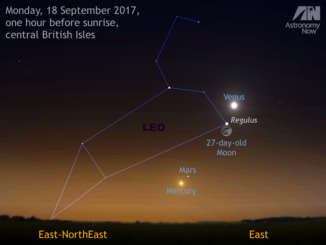
Regulus


See Mercury meet Regulus and Mars near Venus an hour before sunrise
Observers in the UK and Western Europe should find an observing location offering an unobscured eastern horizon an hour before sunrise on Sunday, 10 September to see innermost planet Mercury just 0.6 degrees from Regulus, the brightest star in Leo. Conspicuous planet Venus is your convenient celestial guide to finding Regulus, Mercury and Mars.

Mercury’s prominent evening show under southern skies
Mercury is generally something of a challenge to observe, but the run-up to a particularly favourable easterly elongation occurring on 30 July provides ample opportunities for locating the innermost planet in the evening sky — particularly from the Southern Hemisphere, where a prominent celestial marker in the form of a 2-day-old Moon passes close by on 25 July.
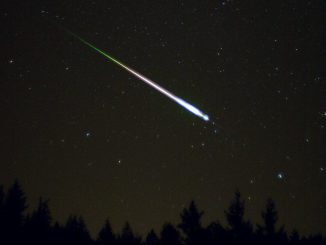
Leonid meteor shower maximum blighted by the Moon
The maximum of the annual Leonid meteor shower, when up to around 15 shooting stars per hour might be expected in a dark sky, is predicted to occur in the small hours of Thursday 17 November for observers in Western Europe and the UK. However, the famously swift, bright Leonids — some with persistent trails — will have to contend with a Moon just three days after full.
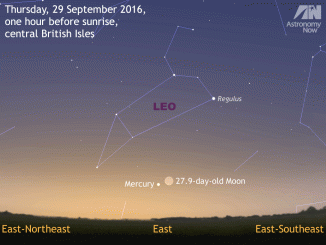
See Mercury at its best in the east at dawn
Mercury is currently putting on a fine show in the east before dawn. Find a UK location with an unobstructed view due east an hour before sunrise to see the innermost planet some 6 degrees above the horizon from about 25 September—5 October. The very old crescent Moon lies just 2 degrees from Mercury at dawn on Thursday, 29 September.
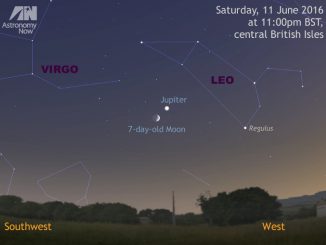
See the Moon and Jupiter get close on 11 June
As dusk fades to dark on Saturday, 11 June, observers in the British Isles should look low in the western sky to see the 7-day-old waxing crescent Moon and Jupiter less than 3 degrees apart, within the same binocular field of view. Get your observations in now as the solar system’s largest planet is poised to leave the celestial stage during the summer.

Make the most of your Jupiter observations during May
Now two months past opposition, the solar system’s largest planet, Jupiter, is highest in the UK sky before sunset and is already descending in the southwest by the time the sky is dark enough to observe it. However, there is still phenomena of the Galilean moons to see and the planet’s Great Red Spot, so make the most of your Jovian observations while you can during May.
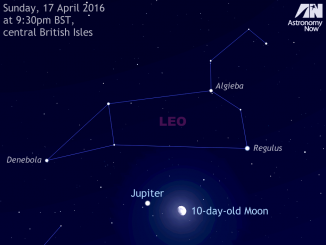
See the Moon and Jupiter get close on 17 April
As dusk fades to dark on Sunday, 17 April, observers in the British Isles should look up to the southern sky to see the 10-day-old waxing gibbous Moon and Jupiter just four degrees apart, within the same binocular field of view. Jupiter’s largest moon, Ganymede, and second Galilean moon, Europa, provide some events for telescope owners to view at higher magnifications.

See the Moon’s close encounter with Jupiter on 21 March
As darkness falls, observers in Western Europe and the British Isles fortunate to have clear skies can view a naked-eye conjunction between largest planet Jupiter and the Moon. For telescope owners, Jupiter’s Great Red Spot will be on show, while Galilean moons Io and Europa partake in a close orbital dance.

Return of the King — get ready for Jupiter at its best
In the early evening of Tuesday, 23 February, the rising waning gibbous Moon — one day after full Moon — lies just 3½ degrees from magnitude -2.5 planet Jupiter low in the eastern sky. Jupiter is closest to Earth on Tuesday, 8 March, so now is the time to get acquainted with the solar system’s largest planet.
